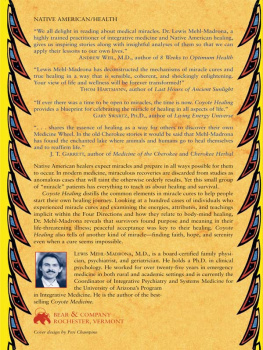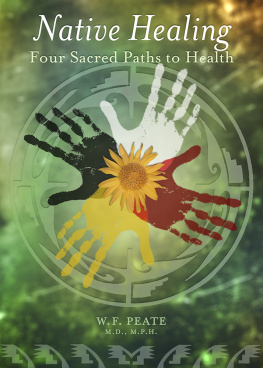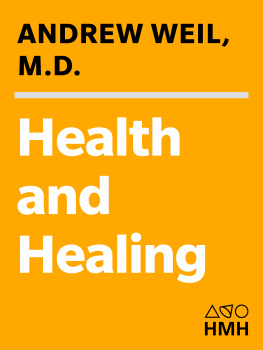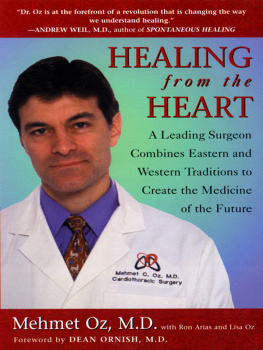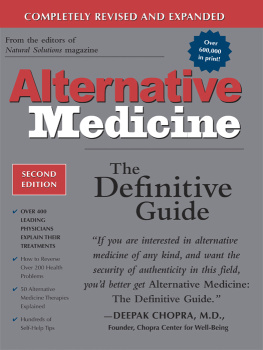
FOREWORD

by Andrew Weil, M.D.
IN THE PROLOGUE to Coyote Medicine, Lewis Mehl-Madrona writes that he became convinced years ago that the ancient and modern approaches to illness can and should be integrated in a way that offers patients the benefits of both. He was way ahead of his time. Integration of conventional and alternative medicine is now much in fashion, but this is a very recent change, forced upon the medical profession by powerful economic forces. Our health care system is in total economic collapse, the logical result of medicines decision in the early part of this century to wed itself to technology. Now, as the century closes, high-tech treatments are simply too expensive to deliver to people who need them. No one can pay the bills, and hospitals all over the country are facing bankruptcy.
At the same time a vast and powerful consumers movement has developed away from conventional practice and toward alternative medicine. Recent surveys show that as many as one in three American patients are now going to alternative providers; significantly, most of them do not tell their regular doctors they are doing so. What patients want is doctors who will take the time to listen to their stories and explain their treatment options, who will not just offer drugs, who are conversant with nutritional influences on health, who can make intelligent recommendations about the use of dietary supplements, who will not ridicule herbal medicine, Chinese medicine, homeopathy, and other unorthodox therapies, who are sensitive to mind/body interactions. They want doctors who will look at them as more than just physical bodies. Obviously, our medical schools are not turning out graduates who can meet these demands.
Out of desperation about the economic catastrophe befalling it, the medical profession is at last opening to new ideas and practices. About twenty medical schools in the United States now offer elective courses in alternative medicine, a few have centers for the study of complementary therapies, and my own institution, the University of Arizona, has started a Program in Integrative Medicine that will soon begin training doctors to combine the best ideas and practices of conventional and alternative medicine. These developments would have been unthinkable even five years ago.
Integration has become a rallying cry of those urging on this reformation. For too long, they say, doctors have regarded patients only as physical bodies, ignoring their minds and spirits. As a result of popular books and television programs, the public has become very enthusiastic about mind/body medicine, not realizing how little of it has penetrated the conventional system. I can see endless possibilities for teaching, research, and practice that take account of emotional and psychological influences on health and illness; in these areas, our work is cut out for us.
But what would it mean to try to incorporate a spiritual perspective into medicine? If doctors routinely ignore the mental/emotional components of human beings, they regard spirituality as completely beyond the pale of scientific medicine.
Throughout the 1970s I traveled around the world looking at healing practices in other cultures. During that time, I visited many Native American practitioners in North and South America. Always I was struck by the fact that when Indians talk about medicine men and medicine women, their use of the word medicine means more than our use of it. In the Native American conception, Medicine (I will use a capital M here) includes not only our medicine (with a small m) but also much of what we call religion and magic. In the ancient world, medicine, religion, and magic were not separate; in our world, they have fallen apart, which is our loss.
Good doctoring requires all the wisdom of religion, all the techniques of magic, and all the knowledge of small-m medicine to be most effective. One way to bring that perspective back into our health care institutions is to look to Native American Medicine as a resource. Lewis Mehl-Madrona has much to offer here, since he combines the heritage and experience of a Native American healer with very thorough training in conventional allopathic medicine. On top of that, he has great passion about replacing the reigning biomedical model with a new paradigm, and he is a good writer.
Coyote Medicine is not medicine of the past, of cultures that are fading. It is also medicine of the future that must be taught in medical schools, practiced in clinics, and brought to all those who seek true health.
Tucson, Arizona
April 1996
CHAPTER ONE

Why Are You Here?
I STARTED medical school expecting to become a research scientist. While still in college, I had joined a professor in his efforts to study biological membranes using a then-new technique called magnetic resonance imaging (now referred to by its acronym, MRI). As a member of his research team, I was named as a co-author of a paper he published on the work, and I imagine my acceptance into Stanford in the early 1970s was based partly on my participation in this new line of research. Indeed, I soon found a professor in my new California home with whom I intended to continue these studies. What I never expected was to become a clinician, focused less on research than on seeing patients.
At Stanford I actually started clinical work immediately. I had pushed myself to finish high school before turning sixteen, and as an undergraduate at Indiana University I had persuaded professors to let me take medical and graduate school biochemistry courses. These gave me advanced standing when I entered Stanford at age eighteen. As long as I took a necessary pharmacology course concurrently, I was ready to start seeing patients on clinical rotations. I was on track to finish medical school in June of 1975, with the required nine-quarter minimum. A decade later I learned I was Stanfords youngest ever peacetime graduate, at twenty-one years of age.
The challenging part for me was not in learning about pharmacology and anatomy but in understanding other doctors. There were numbing lists to memorize, of course, of nerves, muscles, bones, blood vessels, symptoms, diseases, drugs, and side effects; but compared with the knottier puzzles of philosophy or higher mathematics, nothing taught was all that difficult. There was plenty to memorize, but all memorization takes is time. The problem for me was that my interpersonal skills had languished in my race through high school and college. Thankfully, I had a new wife to coach me in the car on the way to dinner parties and social events. Professionally, though, I was on my own.
Medical students on clinical rotations were expected to examine patients and entertain a diagnosis. We would discuss our potential diagnoses, and the treatments and medications they implied, with the faculty physician. The challenge was to show that we had considered every possible diagnosis and had either ruled it out or planned the necessary tests to confirm or disconfirm its existence. Although most patients suffer from common diseases, we relished considering all the outlandish possibilities. First prize went to those who, in the end, turned in exactly the diagnosis our faculty physician had already reachedwe had to learn his or her style and mimic it. At nineteen, much to my own detriment, I was still young enough to be idealistic. I thought it was more important to think for myself than to try to think like someone else.
Next page

